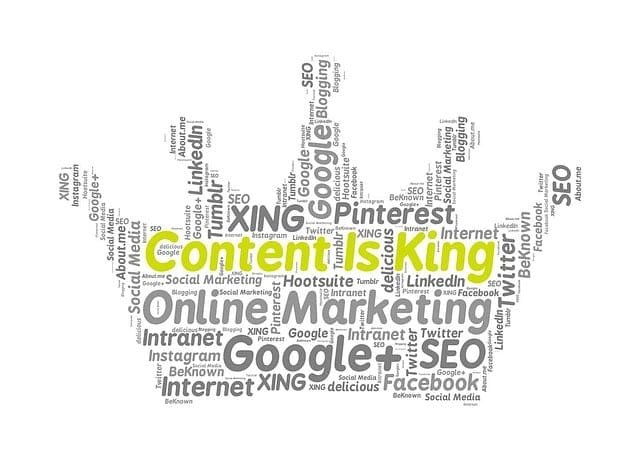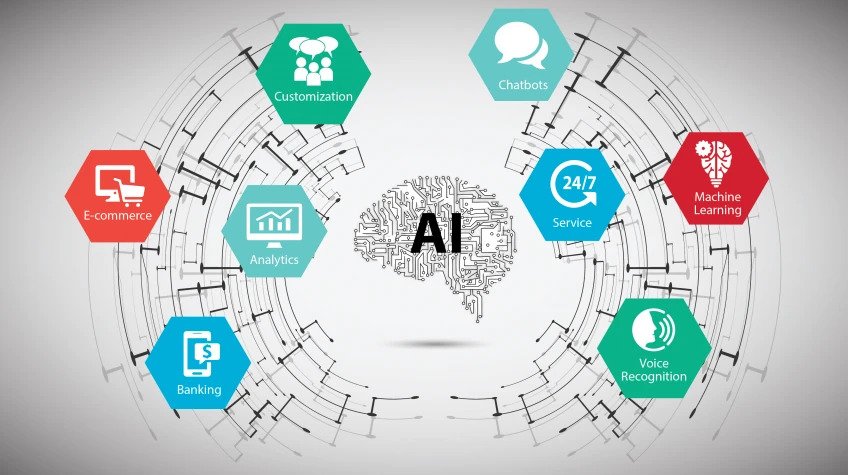In the fast-paced world of digital marketing, content has always been king. But the kingdom of content marketing has undergone a remarkable transformation over the years. From its humble beginnings in the past to its current reign as a cornerstone of online success, and even into the promising future, the evolution of content marketing is a story worth exploring.
In this comprehensive guide, we’ll take you on a journey through the history of content marketing, examine its present state, and peer into the future to see how it’s set to shape the digital landscape. So, fasten your seatbelt as we embark on a journey through time and technology in the world of content marketing.
The Past: Origins and Beginnings
Our journey begins with a look at the roots of content marketing and its early days.
The Birth of Content Marketing
Content marketing traces its roots back to the late 19th century when John Deere, the agricultural equipment company, published “The Furrow” magazine. This magazine wasn’t about selling tractors; it was about providing valuable information to farmers. It was a revolutionary concept—the idea that a company could build trust and loyalty by offering useful content.
The Rise of Print Media
The early 20th century saw the rise of print media as a powerful content marketing tool. Companies began to publish newsletters, brochures, and catalogs to inform and engage their audience. These materials often featured product information, tips, and stories.
The Advent of Radio and Television
With the arrival of radio and television in the mid-20th century, content marketing took on new forms. Brands sponsored radio shows and TV programs, creating content that seamlessly integrated their products and messages. It was a time when advertising and entertainment merged.
The Digital Revolution
The late 20th century brought the digital revolution, and with it, the internet. The World Wide Web opened up new possibilities for content marketing. Brands could now create websites, blogs, and email newsletters to reach a global audience.
The Present: Content Marketing in the Digital Age
Fast forward to the present, and content marketing has become a dynamic and essential part of the digital marketing landscape.
Content Is Everywhere
In today’s digital age, content is everywhere you look. From blog posts and social media updates to videos and podcasts, brands have a plethora of channels to engage their audience. Content is no longer limited to text; it’s a multimedia experience.
The Power of SEO
Search Engine Optimization (SEO) has become integral to content marketing. Brands must optimize their content for search engines to ensure it’s discoverable by their target audience. Keyword research, quality content, and backlinks are vital components.
Social Media Dominance
Social media platforms have emerged as content distribution powerhouses. Brands leverage platforms like Facebook, Instagram, Twitter, and LinkedIn to connect with their audience, share content, and build communities.
Personalization and User Experience
User experience is paramount. Brands now focus on delivering personalized content experiences. Machine learning and data analytics enable customization, ensuring that users receive content tailored to their interests and behaviors.
Content Formats Galore
The variety of content formats has exploded. Brands use videos, infographics, webinars, and interactive content to engage and educate their audience. Visual content is particularly effective in capturing attention.
The Future: Trends and Predictions
Now, let’s gaze into the crystal ball and explore what the future holds for content marketing.
Voice Search and AI
Voice search is on the rise, thanks to smart speakers like Amazon’s Alexa and Google Home. Content will need to be optimized for voice search, and AI-driven content creation tools will become more prevalent.
Augmented Reality (AR) and Virtual Reality (VR)
AR and VR will open up new frontiers for content marketing. Brands will use these technologies to create immersive experiences that allow users to interact with products and services virtually.
Content for Niche Communities
As the digital landscape becomes more crowded, brands will focus on creating content for niche communities. These micro-audiences will demand highly specialized and tailored content.
Sustainability and Purpose-Driven Content
Consumers are increasingly conscious of environmental and social issues. Brands that align with sustainability and purpose-driven causes will use content marketing to convey their values and missions.
Data Privacy and Trust
Data privacy concerns will continue to grow. Brands that prioritize transparency and ethical data practices will build trust with their audience. Content will play a role in conveying these commitments.
Content in the Metaverse
As technology advances, the concept of the metaverse—an interconnected virtual reality space—will become more prominent. Brands will find opportunities to create immersive content experiences within this virtual world, expanding their reach and engagement.
Micro-Moments and Snackable Content
In an era of shorter attention spans, micro-moments and snackable content will gain importance. These bite-sized pieces of content cater to users’ quick information needs and fit seamlessly into their busy lives.
Content Automation and AI-Driven Personalization
Content automation tools powered by artificial intelligence will streamline content creation, distribution, and personalization. AI will analyze user behavior and preferences to deliver content recommendations in real-time.
Video Continues to Thrive
Video content is already a major player, and it will continue to dominate. Short-form videos, live streaming, and interactive video experiences will become increasingly popular. Brands will need to invest in video content to stay competitive.
Content for Wearable Tech
As wearable technology like smartwatches and augmented reality glasses becomes more prevalent, brands will explore content tailored for these devices. Notifications, quick access to information, and AR experiences will be part of the content strategy.
Sustainability Content
Sustainability will remain a prominent theme in content marketing. Brands will share their sustainability initiatives, eco-friendly practices, and contributions to social and environmental causes through compelling content.
Content Governance and Regulation
With the growing importance of data privacy, content governance and compliance with regulations will be a top priority. Brands will need to ensure their content practices align with legal and ethical standards.
Interactive and Gamified Content
Gamification and interactive content will engage users on a deeper level. Quizzes, polls, challenges, and interactive storytelling will make content more immersive and fun.
Voice Content and Podcasting
As voice assistants and podcast consumption continue to rise, brands will invest in voice content strategies. Podcasts, voice search optimization, and voice-activated content will gain traction.

Related: Check out our free SEO suite

The Impact of Content Marketing on Branding
Content marketing has played a pivotal role in shaping and strengthening brand identities. Here’s how:
Brand Storytelling
One of the most significant impacts of content marketing on branding is the emphasis on storytelling. Brands are no longer just entities that sell products or services; they are storytellers. Content marketing has provided a platform for brands to share their unique stories, values, and missions. By crafting compelling narratives, brands can connect with their audience on a deeper, emotional level, fostering brand loyalty and advocacy.
Brand Authority and Trust
Content marketing has enabled brands to establish themselves as authorities in their respective industries. Through informative, educational, and valuable content, brands can showcase their expertise. When consumers perceive a brand as a reliable source of information, trust is built. Trust, in turn, is a fundamental element in building strong and enduring brand relationships.
Brand Consistency
Consistency in branding is essential, and content marketing has helped brands maintain this consistency across various touchpoints. From website content and social media posts to email newsletters and videos, content marketing ensures that a brand’s messaging, tone, and visual identity remain cohesive. This consistency reinforces brand recognition and trust.
The Influence of Content Marketing on Consumer Behavior
Content marketing has had a profound impact on how consumers discover, evaluate, and make purchasing decisions. Here’s how it has influenced consumer behavior:
Informed Decision-Making
Consumers today are more informed than ever before. Before making a purchase, they research products, read reviews, and seek out informative content. Content marketing provides the information consumers need during the decision-making process. Brands that offer valuable and unbiased information through their content can influence consumers to choose their products or services.
Relationship Building
Content marketing fosters relationships between brands and consumers. By consistently delivering valuable content, brands can engage with their audience over time, building trust and loyalty. This relationship-driven approach often leads to repeat business, referrals, and brand advocacy.
User-Generated Content
Content marketing has given rise to user-generated content (UGC), where consumers actively participate in brand narratives. Reviews, testimonials, social media posts, and user-generated content contribute to the credibility and authenticity of a brand. Consumers trust the opinions of their peers, making UGC a powerful influencer of purchase decisions.
The Evolving Role of Content Marketing in Business Strategies
Content marketing is not just a marketing tactic; it’s a fundamental component of modern business strategies. Here’s how it has evolved in this context:
Content as a Competitive Advantage
In today’s competitive landscape, content marketing is not optional; it’s a competitive necessity. Businesses that invest in creating valuable, relevant, and engaging content gain a competitive advantage. High-quality content can differentiate a brand from its competitors, attract a loyal customer base, and drive revenue.
Content for Customer Retention
Content marketing is not limited to attracting new customers; it’s also a powerful tool for customer retention. Brands can use content to keep existing customers engaged, informed, and satisfied. By continuously delivering value through content, businesses can reduce churn rates and increase customer lifetime value.
Data-Driven Content Strategies
Advancements in data analytics have transformed content marketing into a data-driven discipline. Businesses use data to understand audience preferences, track content performance, and make informed decisions. Data-driven insights help refine content strategies, ensuring that content resonates with the target audience.
Conclusion
In conclusion, the journey through the evolution of content marketing is a testament to its enduring significance in the world of branding, consumer behavior, and business strategies. From its humble beginnings as an agricultural equipment company’s magazine to its current role as a driving force in the digital age, content marketing has continually adapted and thrived.
Content marketing has left an indelible mark on branding, reshaping how businesses present themselves, tell their stories, and build trust with their audiences. It has evolved into a powerful tool for establishing brand authority, fostering customer loyalty, and differentiating businesses in competitive markets.
In the realm of consumer behavior, content marketing has revolutionized how individuals discover, evaluate, and make informed decisions. It has empowered consumers with access to valuable information, enabled them to engage with brands on a personal level, and contributed to the rise of user-generated content as a trusted source of recommendations.
READ NEXT:
- Content Marketing for Startups: A Comprehensive Guide
- How to Use Seed Keywords to Expand Your Startup
- Strategies for On-Page SEO for PDFs and Documents
- 5 Proven Strategies to Enhance Your Content Marketing Efforts [Updated]
- A Quick Guide to Crafting Compelling Content for Your Brand






















Comments are closed.